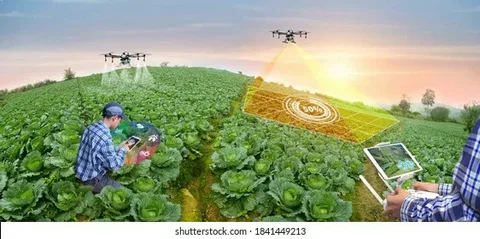As climate change and environmental degradation continue to challenge global agriculture, farmers and researchers are increasingly turning to smarter and more sustainable farming techniques. One such innovation is precision agriculture, a technology-driven approach to farming that aims to optimize the use of resources and improve crop yields. Beyond boosting productivity, the environmental benefits of precision agriculture practices are becoming more evident and essential in the modern agricultural landscape.
What Is Precision Agriculture?
Precision agriculture involves the use of technology such as GPS mapping, sensors, drones, satellite imagery, and data analytics to manage crops and soil more efficiently. These technologies help farmers make informed decisions about planting, fertilizing, irrigating, and harvesting.
Instead of treating entire fields uniformly, precision agriculture allows for variability management—tailoring farming practices to the specific needs of each section of a field. This results in more efficient use of inputs, such as water, fertilizer, and pesticides.
Reduced Chemical Runoff and Soil Contamination
One of the environmental benefits of precision agriculture practices is the significant reduction in chemical runoff. Traditional farming methods often involve over-application of fertilizers and pesticides, which can lead to harmful runoff into nearby water bodies. Precision agriculture, on the other hand, uses data to apply just the right amount of chemicals where and when they are needed.
This not only prevents water pollution but also reduces the risk of soil degradation and contamination, preserving long-term soil health.
Water Conservation and Efficient Irrigation
Water scarcity is a growing concern in agriculture. Precision agriculture addresses this challenge through smart irrigation systems that monitor soil moisture levels and weather conditions in real-time. By delivering water only when and where it’s needed, farmers can significantly reduce water waste.
This efficient use of water contributes to the environmental benefits of precision agriculture practices, helping conserve this vital resource while also lowering energy consumption associated with pumping and distributing water.
Lower Greenhouse Gas Emissions
Another key benefit of precision agriculture is its role in reducing greenhouse gas emissions. By minimizing the overuse of fertilizers—which release nitrous oxide, a potent greenhouse gas—precision agriculture helps reduce the carbon footprint of farming operations. Additionally, fewer tractor passes across the field (due to more efficient input application) lead to lower fuel consumption and reduced CO₂ emissions.
Promoting Biodiversity and Sustainable Land Use
Precision agriculture encourages responsible land use by reducing the need to expand agricultural fields into forests or grasslands. With better productivity on existing farmland, there is less pressure to convert natural habitats into croplands.
Furthermore, by minimizing pesticide use, precision farming helps protect beneficial insects and pollinators, supporting biodiversity within the agricultural ecosystem.
Conclusion
In a world where sustainable farming is no longer optional but essential, the environmental benefits of precision agriculture practices cannot be overstated. From reducing chemical runoff and conserving water to lowering emissions and preserving biodiversity, precision agriculture is paving the way for a greener future in farming.
As more farmers adopt these innovative techniques, the potential to heal and protect our environment while feeding a growing population becomes not just a possibility—but a reality.


